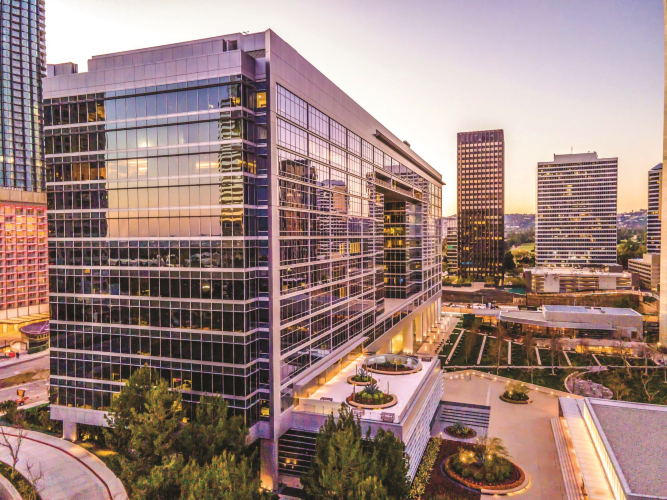As law firms navigate the post-pandemic world, their management teams continue to adjust office spaces and locations as they seek to entice employees back to in-office work.
Such is the conclusion of Jones Lang LaSalle’s Law Firm Group, which in a recently published analysis said Century City continues to grow as the destination for law firms, despite significantly higher costs compared to downtown, the other main submarket in Los Angeles. As of July, year over year, law firms had leased out more than 500,000 square feet of office space in Century City, while those that have renewed in downtown tended to downsize.
“There is a flight to quality within different markets,” explained Kevin Bender, managing director at JLL. “We look at the flight to quality in Los Angeles not so much as movement from one building to another, but from downtown to Century City, and at a premium.”
Century City, he said, boasts a large number of newer, contemporary buildings, a more modern commercial environment and a stronger perception of safety. It also likely represents a better commute for attorneys, who tend to call the West Side home.
On the other hand, downtown office space is significantly cheaper – less than half the price per square foot of Century City’s trophy offerings. And its proximity to the courthouses is unmatched.
“Traditionally, the firms downtown have been litigation heavy. That’s part of what’s been challenged a little bit,” Bender said. “With most firms having some form of intellectual property practice, that’s been a draw to Century City. There are still some of those groups that require downtown.”
Since July of last year, more than a few notable firm transactions have taken place. Morrison Foerster and King & Spalding have renewed their downtown leases. The downtown offices of Sidley Austin, Mayer Brown, Musick Peeler and Alston & Bird have relocated elsewhere downtown, with some downsizing and others expanding. Skadden inked a deal to move from its longtime downtown location to a 58,000-square-foot Century City office, while Sullivan & Cromwell renewed in Century City, Baker McKenzie expanded in Century City and Willkie Farr & Gallagher entered the L.A. market via Century City.
“We do have a number of firms who are still very committed to DTLA. That’s been the traditional hub for the legal community,” Bender said. “A lot of that was driven by access to the courts, centralized access and access to public transportation. A lot of those things were challenged by the pandemic. I think firms are starting to reassess how they’re starting to balance out their portfolio.”
Ultimately, Bender said, while Century City is still a magnet for firms, plenty will stay downtown, if not in both locations. There’s no indication of a “wheel and spoke” model developing, in which firms have satellite offices in smaller submarkets. And, he added, it often comes down to how employers are incentivizing employees to return to the office.
“I think people have started to say, ‘I can move to Century City. I’ll pay more, but I’ll have an easier time getting people into the office.’ That means something to them,” Bender said. “And then there are firms who still believe in downtown and say, ‘I’ll still invest in this space. And I’ll continue to enjoy the discount on rent, too.’”

